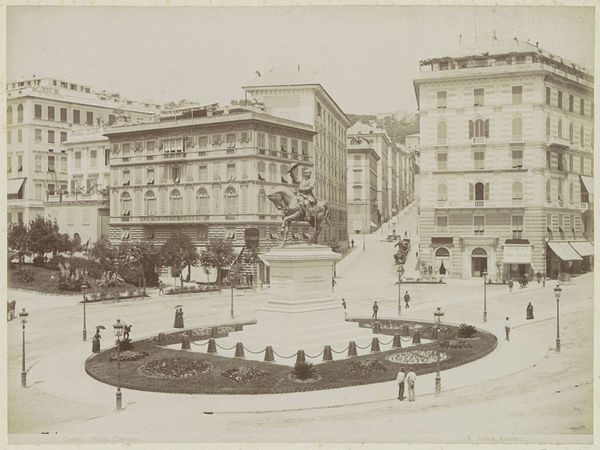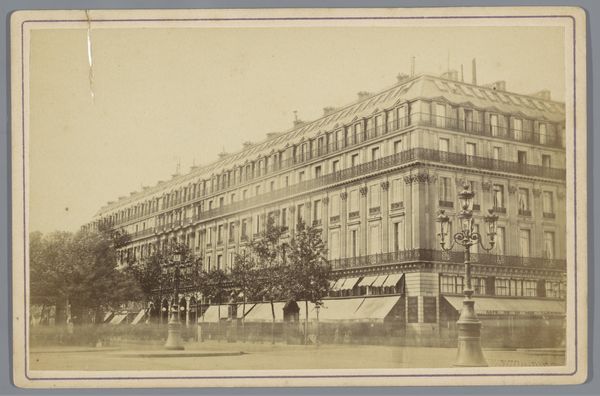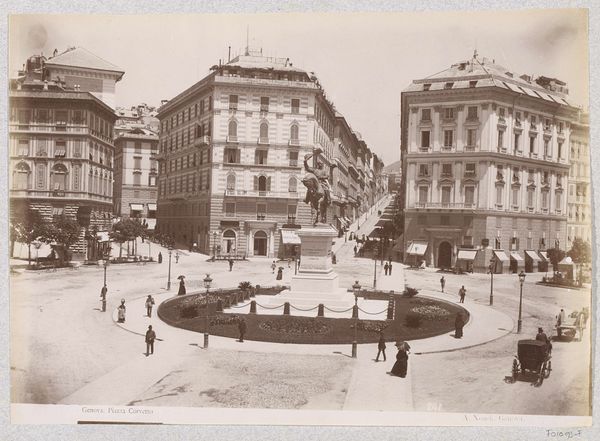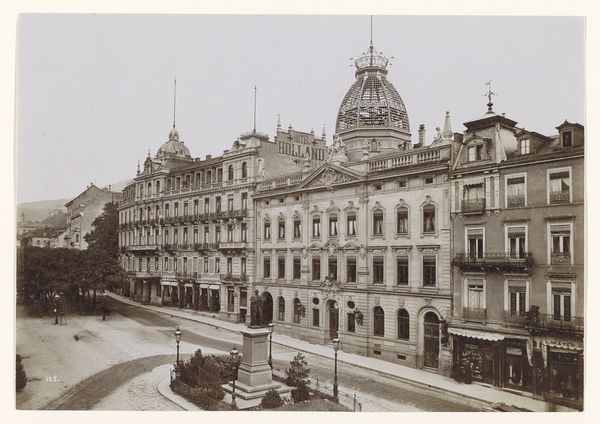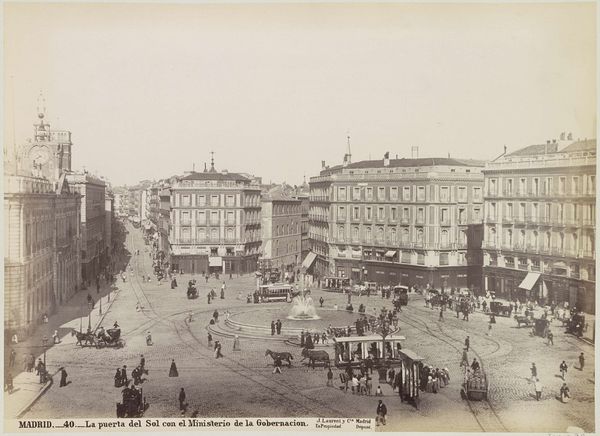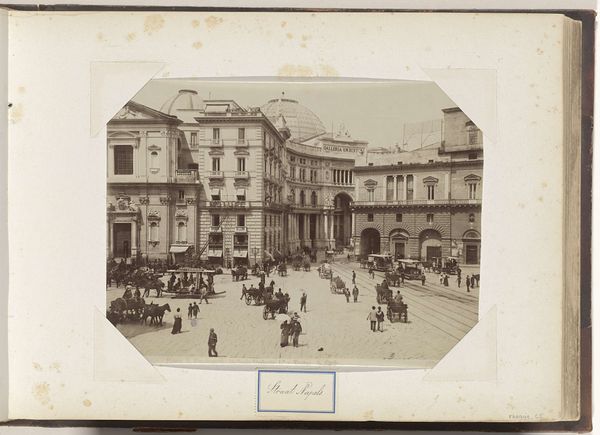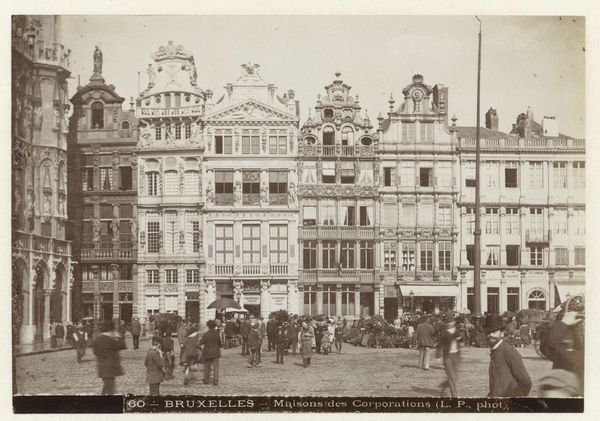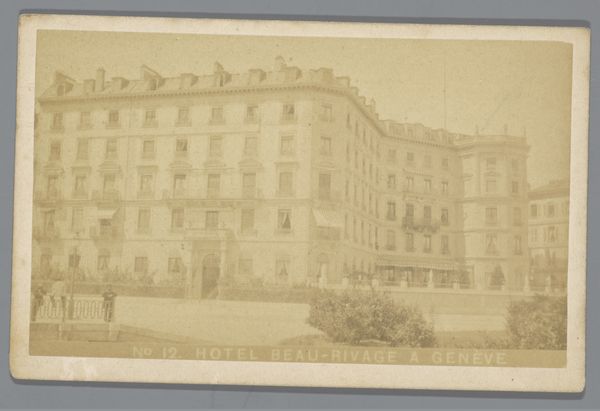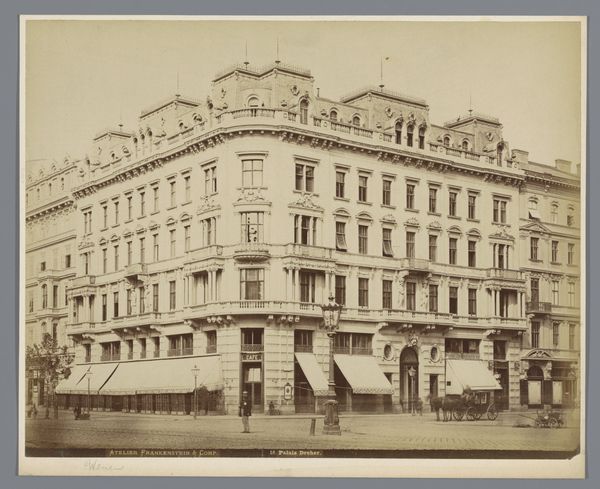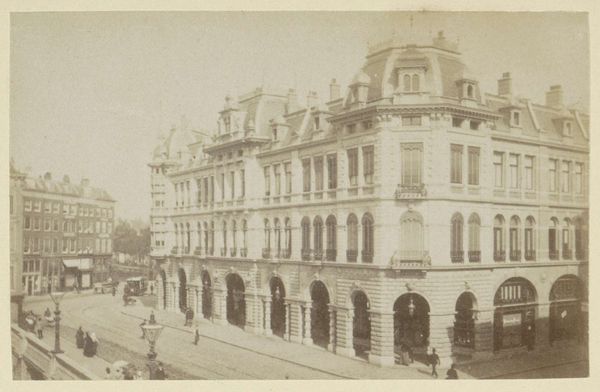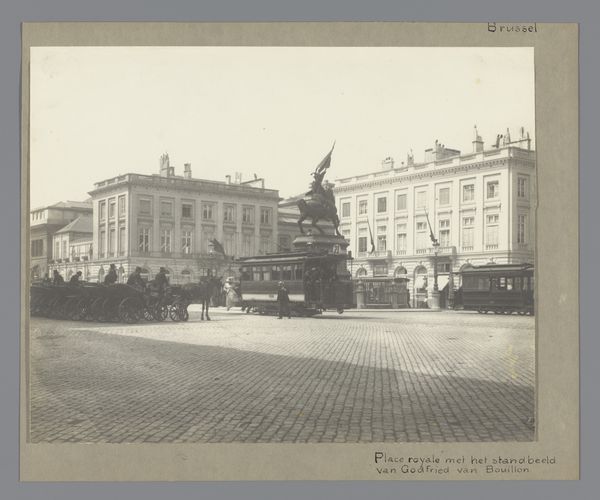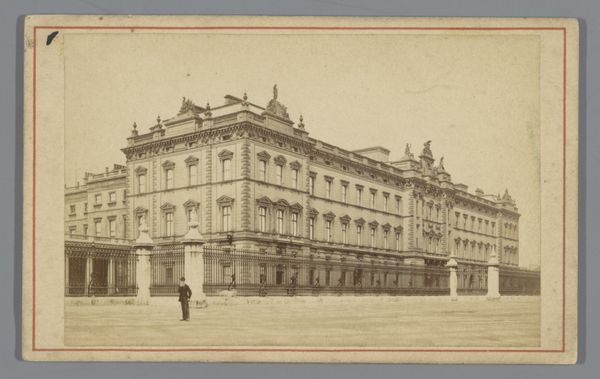
Puerta del Sol in Madrid met bovenin het linker gebouw een fotostudio c. 1850 - 1863
daguerreotype, photography
landscape
daguerreotype
photography
historical photography
cityscape
realism
building
Dimensions: height 237 mm, width 422 mm
Copyright: Rijks Museum: Open Domain
Curator: Charles Clifford gives us this stunning view of Madrid’s Puerta del Sol, estimated to be from between 1850 and 1863, captured via daguerreotype. Editor: The stillness is remarkable. It's a very geometrical, yet serene image. The light plays on the building facades creating an interesting composition. There’s something almost unsettling about the lack of pronounced shadows, everything seems so evenly lit. Curator: Yes, that uniformity, combined with the long exposure necessitated by the daguerreotype process, gives it that eerie stillness. This public square would have been bustling. The daguerreotype became the foundation of both a rising Realism in art but also a means of urban documentation during a period of rapid urban growth and reconstruction. Editor: Absolutely. Realism, as a mode of expression, relies heavily on detailed representation. But in this context, it transcends simple mimicry. Look at the tonal gradation, the subtle modulations – each contributing to an intricate network of relations. Do you see how the buildings, with their precise symmetry, become not just buildings but structures conveying the order imposed upon the city? Curator: And consider the placement of a photographic studio, evident on one of the buildings, emphasizing how photography itself was becoming integrated into urban life, a marker of modernity. The image captures not only architecture, but also the ambition of a rising class, one invested in modern representations of self and space. We often overlook the political dimensions of supposedly objective urban landscape imagery. Editor: Interesting point. Though the political intent may not be immediately legible, its impact resides in how it frames everyday experiences and urban progress. What’s striking is the stark absence of visible figures aside from ghostly blurs in the foreground. That very absence lends power to the square itself. It seems almost deserted in its clarity and sharp focus. The photographer positions us at the square's very heart to appreciate the architecture from that vantage point. Curator: Precisely. Clifford offers us a constructed, almost idealized vision, reflecting a specific social gaze, and the role of the monarchy at this moment in Spanish history. The photographic arts would serve their own vision of the modernization of Spain. Editor: A compelling consideration when appreciating Clifford's study in composition. What seems objective contains complex historical encoding. Curator: Indeed. It transforms what appears merely representational into something that's intrinsically purposeful. Editor: A perfect illustration of form following function.
Comments
No comments
Be the first to comment and join the conversation on the ultimate creative platform.
